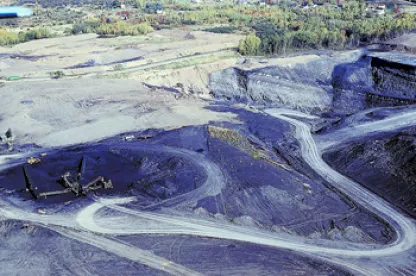Citing a recent occupational death and serious accident, the Mine Safety and Health Administration said it will be enforcing safety standards over the next several months in the Metal/Non-Metal (M/NM) sector of mining to try to prevent accidents associated with confined spaces.
“MSHA will be placing special emphasis on enforcing its standards related to entering bins, hoppers, silos, tanks, and surge piles,” M/NM Administrator Neal Merrifield stated in a message to stakeholders. He explained that the push is being driven by the death in July of a 25-year-old contract miner who was overcome inside a tanker railcar and by an incident in which another miner was severely burned during maintenance inside a baghouse screw conveyor hopper.
A confined space has limited or restricted means for entry or exit and is not designed for continuous human occupancy. Confined spaces include, but are not limited to, tanks, vessels, silos, storage bins, hoppers, vaults, pits, manholes, tunnels, equipment housings, ductwork, and pipelines.
“Because confined spaces are potentially dangerous, employers should evaluate all confined spaces in which their employees work to determine whether hazards exist or whether the work to be done in the space can create hazards,” Merrifield advised. MSHA recommends conducting a hazard assessment and implementing a permitting system as part of a safe entry standard operating procedure, he said.
Unlike the Occupational Safety and Health Administration, which has a regulation specifically addressing confined spaces, MSHA instead relies for enforcement on a number of relevant standards. For M/NM surface and underground operations, these include standards related to air quality and physical agents (30 CFR §§56/57.5001(a), .5002, and .5005(c)), hazardous motion (30 CFR §56/57.14105), safety belts and lines (30 CFR §§56/57.15005), protective equipment and clothing (30 CFR §§56/57.15006), and materials storage and handling (30 CFR §§56/57.16002). Part 46 and Part 48 training requirements for surface miners and underground miners, respectively, also apply, as does an underground standard pertaining to oxygen deficiency (30 CFR §57.5015).
“These standards regulate hazardous atmospheres; material that has the potential to engulf an entrant; walls that converge inward or floors that slope downward and taper into a smaller area which could trap or asphyxiate an entrant; and any other recognized safety or health hazard, such as unguarded machinery, exposed live electrical wires, or high heat,” Merrifield said.
Besides enforcement, the agency will engage in education and outreach, including walk-and-talks, using personnel from its Educational Field and Small Mines Services unit. A one-page hazard alert was posted on the agency’s website on November 10, which lists nine recommended best practices, along with an admonition to workers not to enter a confined space to rescue another worker without first donning special lifesaving equipment or assuring that air in the space is safe to breathe. Rescue attempts in a toxic atmosphere by untrained personnel are extremely dangerous and can lead to multiple deaths, according to the alert, which was put together as part of a safety effort between the agency and an MSHA Alliance partner, the Industrial Minerals Association-North America.
In other MSHA news, the agency has announced it is extending the period for its request for information regarding refuge alternatives in underground coal mines. The new deadline is January 15, 2016.




 />i
/>i

